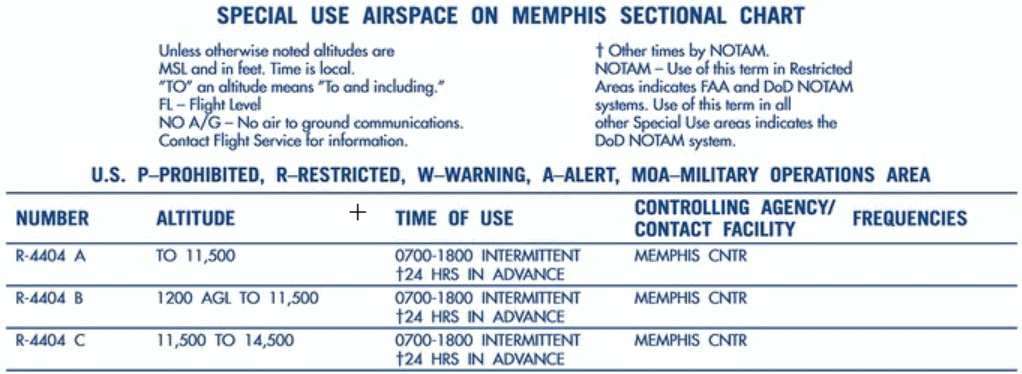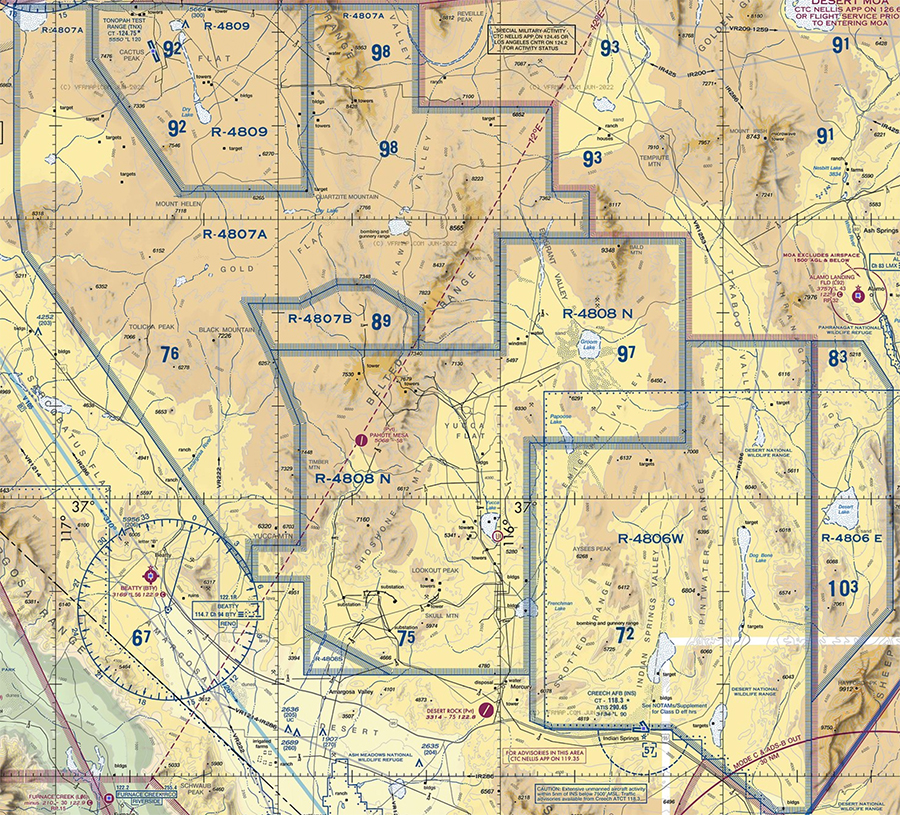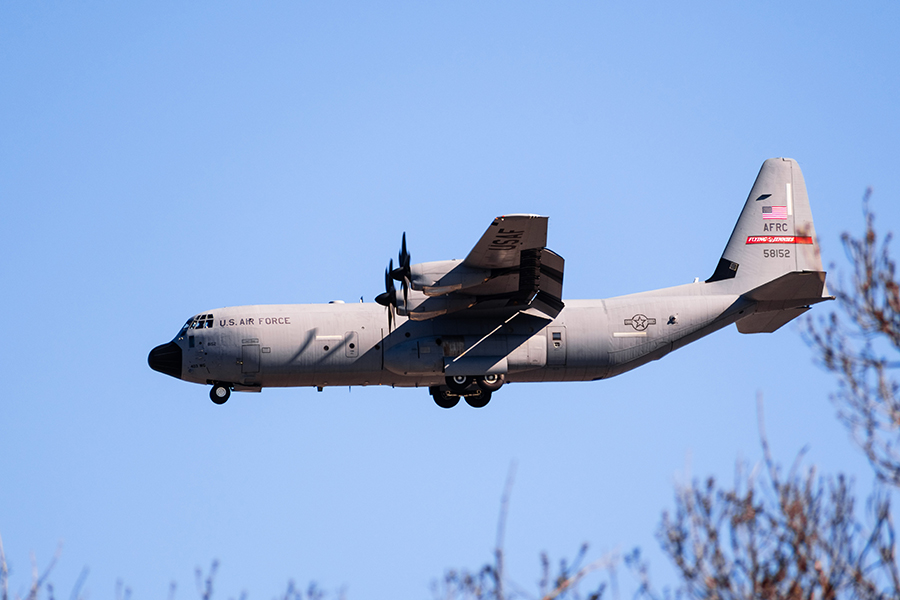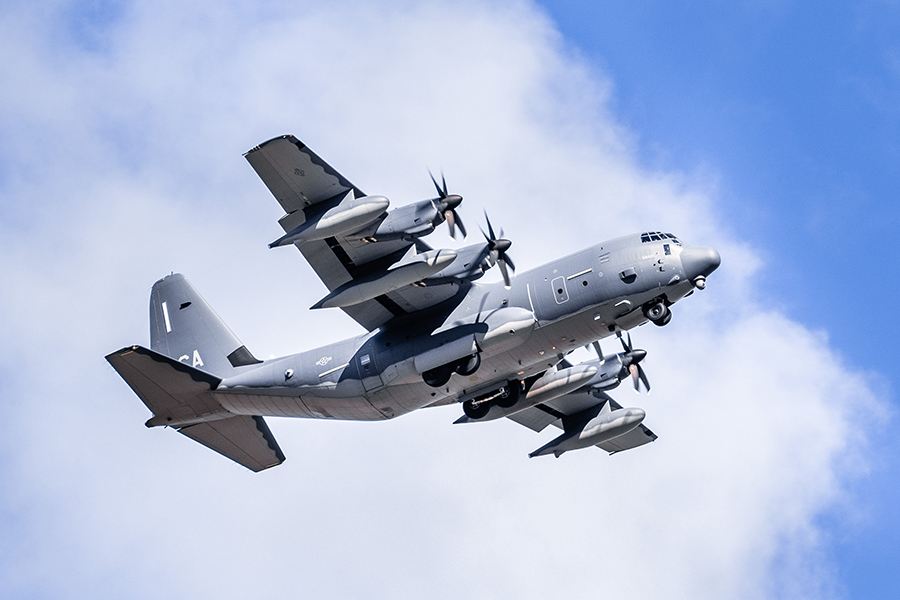Imagine this; You’re flying along, minding your own business, when you spot something out of the corner of your eye. Next thing you know, you have an F-16 on your wing and an awkward phone call with the FAA waiting for you on the ground. What went wrong? You entered a restricted area without permission.
To avoid this situation coming to fruition, let’s look at what restricted areas are and how to operate in and around them.
What is a Restricted Area?
A restricted area is a section of airspace where flight is not entirely prohibited but is subject to restrictions. The Federal Aviation Administration (FAA) creates restricted areas to facilitate activities that pose a hazard to aircraft, such as military exercises involving live ammunition.
Restricted areas are less restrictive than prohibited areas and not necessarily active at all times. Restricted areas are often found near or over military bases or sensitive locations. With over 500 restricted areas across the US, you will likely encounter one if you haven’t already.
Identifying Restricted Areas
Restricted areas are well documented and are easy to spot on a sectional chart.
Information on restricted areas is available in the legend section of your section chart, which will provide information concerning the properties of the restricted area. You will also find information on restricted areas by using ForeFlight; Tap and hold over a particular piece of restricted airspace, and a popup with the related information will appear.
Restricted areas have unique identifiers that contain the letter “R” followed by a dash and four numbers, and sometimes one or two numbers afterward. For example, R-3701 A. The numbers and letters after the “R-” are known as the “designator.”
Other relevant information concerning a restricted area includes:
- Location (e.g., Fort Campbell, KY)
- Block Altitude (e.g., 1200 AGL to FL 180)
- Active Times (e.g., CONTINUOUS, or BY NOTAM 24 HRS IN ADVANCE, or 0630 TO 2300)
- The Controlling Agency (e.g., ZID CNTR)
- The controlling agency is the agency (usually Air Traffic Control, either civilian or military) responsible for activating and controlling the restricted area.


Operating In Restricted Areas
To fly through a restricted area, you must obtain permission from the controlling agency before arrival.
The easiest way to obtain permission is to phone the controlling agency directly. You will find the associated controlling agency on ForeFlight or your sectional chart, and you should be able to find their contact details through a Google search.
If you haven’t obtained permission beforehand, ATC will likely not allow you to enter the restricted area if you ask for permission in the air. There are exceptions, however, especially if the restricted area is not active (known as “cold” or “hot”) and you have a legitimate reason.
While avoiding restricted airspace remains your responsibility, if you have a flight following on a VFR flight, ATC will make sure that you don’t inadvertently enter restricted airspace.
Instrument Flight Rules (IFR)
Restricted areas become far more straightforward if you are on an IFR flight. ATC will ensure that you remain clear of restricted areas that you cannot enter, and they will handle any clearances required if you do enter restricted areas. In other words, if you aren’t allowed to enter a restricted area, ATC will change your course, and if you are allowed to enter a restricted area, ATC will handle any clearances you may require.
Section 3-4-3(b) of the AIM states the following:
- If the restricted area is not active and has been released to the controlling agency (FAA), the ATC facility will allow the aircraft to operate in the restricted airspace without issuing specific clearance for it to do so.
- If the restricted area is active and has not been released to the controlling agency (FAA), the ATC facility will issue a clearance which will ensure the aircraft avoids the restricted airspace unless it is on an approved altitude reservation mission or has obtained its own permission to operate in the airspace and so informs the controlling facility.
This rule applies to VFR-on-top clearances as well.
Temporary Flight Restrictions (TFRs)

Temporary Flight Restrictions (TFRs) are temporary areas of restricted airspace created through the publication of a Notice to Airmen (NOTAM). The FAA uses TFRs to restrict airspace when creating a permanent restricted area is impractical.
Authorities may issue a TFR for many reasons, such as:
- To protect the president and other public officials.
- Create a safe area for firefighting or disaster relief aircraft.
- Ensure security and prevent airspace congestion above events such as sports matches and large gatherings.
- Clear airspace for space agency operations.
While TFRs operate in a similar manner to traditional restricted areas, it is far more difficult to receive permission to enter them.
Due to their temporary, short-term, and sometimes short-notice nature, TFRs are notorious for being violated by oblivious pilots.
The FAA publishes a list of active TFRs that is updated in real-time. In addition, ForeFlight will also provide TFR information.
Conclusion
While restricted areas may often be inconvenient, they play an essential role in ensuring the safety of everyone involved on the ground and in the air.
After this deep-dive into restricted areas, the only time you should be flying in formation with an F-16 is while you’re in another F-16.



